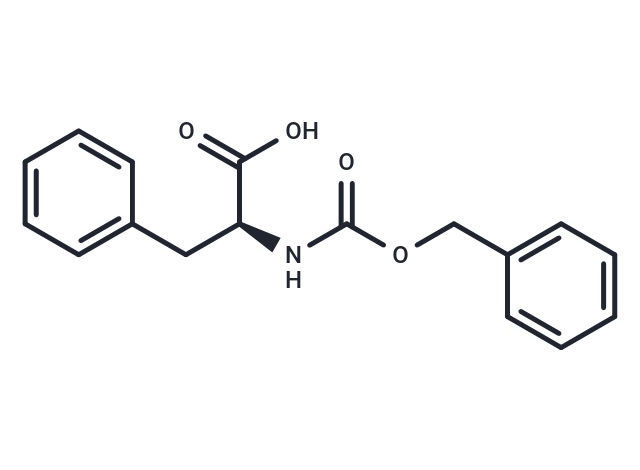Shopping Cart
Remove All Your shopping cart is currently empty
Your shopping cart is currently empty
Carbobenzoxyphenylalanine (NSC-402059) is a thermolysin inhibitor.

| Pack Size | Price | USA Warehouse | Global Warehouse | Quantity |
|---|---|---|---|---|
| 1 g | $29 | - | In Stock | |
| 1 mL x 10 mM (in DMSO) | $29 | In Stock | In Stock |
| Description | Carbobenzoxyphenylalanine (NSC-402059) is a thermolysin inhibitor. |
| In vitro | The protease can be inhibited by the serine specific reagents phenylmethanesulfonyl fluoride and diisopropyl fluorophosphate and the alkylating reagent, carbobenzoxyphenylalanine chloromethyl ketone, in the presence of organic solvents at 1 mM concentration.?The inhibitions of chromatin-bound protease in rat liver by these compounds are irreversible.?On the other hand, carbobenzoxyphenylalanine and p-nitrophenyl acetate were shown to be reversible inhibitors of rat liver chromatin-bound protease[1]. |
| Synonyms | NSC-402059, NSC402059, NSC 402059, Carbobenzoxy-L-phenylalanine |
| Molecular Weight | 299.32 |
| Formula | C17H17NO4 |
| Cas No. | 1161-13-3 |
| Smiles | OC(=O)[C@H](Cc1ccccc1)NC(=O)OCc1ccccc1 |
| Relative Density. | 1.1441 g/cm3 (Estimated) |
| Color | White |
| Appearance | solid |
| Storage | keep away from moisture | Powder: -20°C for 3 years | In solvent: -80°C for 1 year | Shipping with blue ice/Shipping at ambient temperature. | |||||||||||||||||||||||||||||||||||
| Solubility Information | DMSO: 60 mg/mL (200.45 mM), Sonication is recommended. | |||||||||||||||||||||||||||||||||||
Solution Preparation Table | ||||||||||||||||||||||||||||||||||||
DMSO
| ||||||||||||||||||||||||||||||||||||
| Size | Quantity | Unit Price | Amount | Operation |
|---|

Copyright © 2015-2025 TargetMol Chemicals Inc. All Rights Reserved.